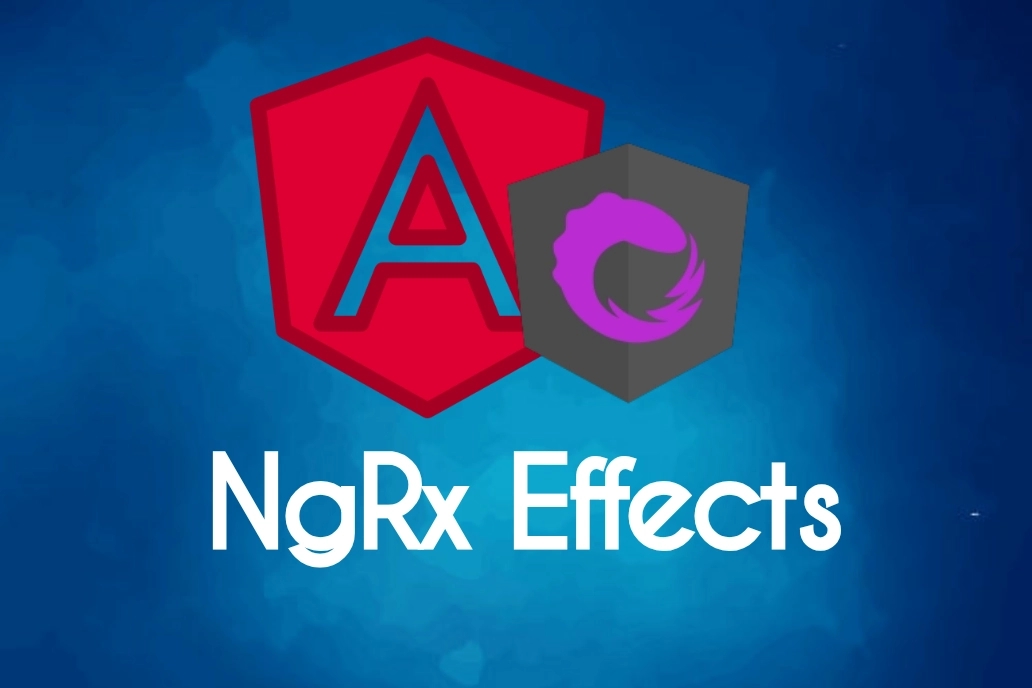Reactive State management in the angular - NgRx Store, actions, selectors
NgRx framework helps to build reactive angular applications.
Basic Concepts
NgRx store provides reactive state management for the angular application. NgRx store is the redux implementation developed specifically for angular applications and provides RxJS observable API.
State is an immutable data structure that is a single source of truth for the whole application.
NgRx Actions represent the unique events in the application which may be used to perform state transition or trigger side-effects.
NgRx Reducers are pure functions that react to Actions to perform state transitions.
NgRx Selectors are pure functions that select, derive, or compose a slice of the state.
NgRx Effects allow the isolation of side-effects.
Prerequisites -
you have fair understanding of angular framework.
You have a basic understanding of redux architecture.
you have a fair knowledge of
RxJsObservable API and various operators.
Table of contents
- Installation
- State
- Design the State
- Initialize the State
- NgRx Actions
- NgRx Reducer
- createReducer function
- Create ActionReducerMap
- Register the State
- NgRx selectors
- Selectors
- createSelector function
- String selectors.
Installation
If you already have an angular app, you can directly go to step - 4
# 1) install angular cli
npm install -g @angular/cli
# 2) create a demo app
ng new ngrx-angular-demo
# 3) navigate to demo app
cd ngrx-angular-demo
# 4) install ngrx store
ng add @ngrx/store@latest
# 5) run angular in dev mode
ng serve
To begin with, let us have a look at an example file structure. A structure like this would be helpful to split up each feature of NgRx state management in your app. I usually replicate the same structure in each feature module.
──store
|_ app.actions.ts
|_ app.effects.ts
|_ app.reducer.ts
|_ app.selectors.ts
app.actions.tsfile will contain theNgRX actionsapp.effects.tsfile will contain theNgRx effects.app.reducer.tsfile will contain theStatedesign and its initialization. it will also contain reducer function.app.selectors.tswill contain theNgRx selectors.
Here is the complete project setup.
State
The state represents an immutable object that contains the state of an application. It is read-only, so every state transition will return a new state rather than modifying the existing state. As the application grows, each feature should contain a seperate state which are part of the global app state. As such, application state contains one or more feature states.
The state is similar to Javascript objects. It contains the feature states as the key-value pairs where the key represents a feature state and the value is the feature state object.
The state related to a feature module is referred to as feature state.
interface State{
feature_1: FeatureOneState,
feature_2: FeatureTwoState,
feature_3: FeatureThreeState
}
Design the State
Let’s assume, our angular application has many feature modules. One of the feature modules is responsible for user’s profile. The profile module is responsible for rendering the list of users and the related posts .
To design the state, we can assume that the state required for the profile module should contain List of users and List of posts.
Let’s call the profile state as ProfileFeatureState.
/** User modal */
export interface User {
id: number;
email: string;
first_name: string;
last_name: string;
avatar: string;
}
/** post modal **/
export interface Post {
id: number;
userId: number;
title: string;
body: string;
}
/** the modals should ideally be in their own ts file**/
export interface ProfileFeatureState {
users: User[];
posts: Post[];
}
We defined the type for User and Post and also created an interface for ProfileFeatureState.
Finally, we would add ProfileFeatureStateto applications root state -AppState. The profile key represents the profileFeatureState.
interface AppState{
profile: UserFeatureState,
//..other features here
}
Initialize the State
Initially, the state of the application is null since there would be no data. As such, both the users array and posts array would be initialized to null.
export const initialProfileFeatureState: ProfileFeatureState = {
users: null,
addresses: null
};
At this point, app.reducer.ts file should look like -
/*app.reducer.ts*/
/** User modal */
export interface User {
id: number;
email: string;
first_name: string;
last_name: string;
avatar: string;
}
/** Post Modal */
export interface Post {
id: number;
userId: number;
title: string;
body: string;
}
export interface ProfileFeatureState {
users: User[];
addresses: Address[];
}
export const initialProfileFeatureState: ProfileFeatureState = {
users: null,
addresses: null
};
export interface AppState {
profile: ProfileFeatureState;
}
Actions:
NgRx Actions represent events in the application. They may trigger a state transition or trigger a side-effect in NgRx Effect services.
interface Action{
type:string
//optional metadata properties
}
The Action interface contains a property called Type. The Type property identifies the action. Actions can also contain optional metadata.
createAction function is used to create the actions and it returns an ActionCreator function. ActionCreator function when called returns an action of type TypedAction. Optionally, we can also supply additional metadata using props function.
Let’s go ahead and create an action for add users to ProfileFeatureState.
export const addUsers = createAction(
'[profile] add users',
props<{ users: User[] }>()
);
Notice the type of addusers action as [profile] add users. The [profile] represents the source of action. Also the props contains the array of users as the metadata. addUsers action is dispatched to indicate that the users should added to state. It will also contain user[] as metadata.
Similarly, we can create an action for adding posts to the feature state.
//file: app.actions.ts
export const addPosts = createAction(
'[profile] add posts',
props<{ posts: Post[] }>()
);
Similarly the Actions related to posts are dispatched
Actions represent the events and not the commands or operations . A single command or operation may generate many types of Actions. For example: An operation which creates a new user would atleast generate Actions for success and failure such as
[profile] user createdor[profile] user creation failed.
NgRx Reducer -
Reducers are pure functions which perform transitions from one state to another state based on the latest action dispatched. The reducer functions do not modify the existing state, rather it returns a new state for every state transition. Hence all the reducer functions perform immutable operations.
CreateReducer
NgRx provides a createReducer function to create reducers. It takes initialState as the first param and any number of on functions. The on function provide association between actions and the state changes.
When an action is dispatched, all the reducers receive the action. The on function mapping determines whether the reducer should handle the action.
createReducer function returns an ActionReducer function . ActionReducer function takes an Action and a State as input, and returns a new computed State.
Let’s go ahead a create reducer which handles transitions for ProfileFeatureState.
import * as AppActions from './app.actions';
const theProfFeatureReducer = createReducer(
initialProfileFeatureState,
on(AppActions.addUsers, (state, { users }) => ({
...state,
users: [...users]
})),
on(AppActions.addPosts, (state, { posts }) => ({
...state,
posts: [...posts]
})),
);
createReducer function maps many actions and returns an ActionReducer function.
addUsersaction is mapped to a function that creates a newUserarray and returns a newly computed state.Similarly the
addPostsaction is mapped.
The […]
spread operatorcopies the properties of the object and returns a new object. It only performs the shallow copying and does not copy the nested structures. You should always consider a better alternative if you are dealing with a state that contains nested data structures. Libraries like lodash provide methods to clone nested structures.
Create ActionReducerMap
ActionReducerMap provides the mapping as key-value pairs where the key represents the feature name as a string and the value is the ActionReducer function returned by createReducer function.
In our case, the ActionReducerMap will contain profile as a key and value as theProfFeatureReducer.
/**The profileFeatureReducer function is necessary as function calls are not supported in the View Engine AOT compiler. It is no longer required if you use the default Ivy AOT compiler (or JIT)**/
function profileFeatureReducer
(state: ProfileFeatureState = initialState, action: Action) {
return theProfFeatureReducer(state, action);
}
/** AppActionReducer Map**/
export const AppActionReducerMap: ActionReducerMap<AppState> = {
profile: profileFeatureReducer
// ... other feature go here
};
It is not necessary to create an ActionReducerMap. You can directly provide the mapping in StoreModule.forRoot({key: ActionReducer})while registering the reducer in app.module.ts. You can also separately register the feature state in the feature module. I prefer creating the ActionReducerMap separately as it provides a better type checking in Typescript.
At this point, our app.reducer.ts file should look like :
/** app.reducer.ts **/
export interface ProfileFeatureState {
users: User[];
posts: Post[];
}
export const initialProfileFeatureState: ProfileFeatureState = {
users: null,
posts: null
};
export interface AppState {
profile: ProfileFeatureState;
}
const theProfFeatureReducer = createReducer(
initialProfileFeatureState,
on(AppActions.addUsers, (state, { users }) => ({
...state,
users: [...users]
})),
on(AppActions.addPosts, (state, { posts }) => ({
...state,
posts: [...posts]
}))
);
function profileFeatureReducer(state: ProfileFeatureState = initialProfileFeatureState, action: Action) {
return theProfFeatureReducer(state, action);
}
export const AppActionReducerMap: ActionReducerMap<AppState> = {
profile: profileFeatureReducer
};
Register the State
Once the reducer is created, It should be registered in the Module .
The state can be registered using one of the two options:
Register Root state
To register the global store in the application
StoreModule.forRoot({ AppActionReducerMap })StoreModule.forRoot()takesActionReducerMapas an argument. The map containskeyandActionReducerObject returned bycreateReducerfunction.Register each feature state separately -
Feature states are similar to root states but they represent the state of specific features of an application. Typically, each feature should be registed in its own module.
StoreModule.forFeature({ profile: profileFeatureReducer })
NgRx Selectors -
Selectors return a slice of application state. Selectors are pure functions and provide memoization among other features such as type-safety, composition, and portability.
Selectors
As you may recall, state is a large object and feature states are stored as key-value pairs. The key to the feature state can be used to obtain the feature state object like obj.key.
export interface AppState{
profile: ProfileFeatureState
}
If we have to select the profileFeatureState , we would do as AppState.profile and it would return the profileFeatureState.
Similarly to create a selector function which returns profileFeatureState from AppState, we would do like
selectProfile = function(state:AppState){ return state.profile; }
or we could use the arrow(=>) functions to simplify it.
selectProfile = (state:AppState) => state.profile;
That is theselectProfile selector.
//inside an angular component or service
//injec NgRx store instance
constructor(private store: Store) { }
profile$ = this.store.select(selectProfile);
The store instance is injected in constructor and no generic type is mentioned. In this case, TypeScript is able to automatically infer types from the selector function.
There is one more way to get the selected state from store
NgRx store is an observable and NgRx provides pipeable select operator similar to RxJs operators.
profile$ = this.store.pipe(select(fromSelectors.selectProfile));
Wait, there is more to selectors….
Pure functions always return the same value for same set of arguments. It means, selectors will always return the same piece of state if the argument do not change. Thus we could leverage this property of selectors to provide memoization.
createSelector functions
NgRx provides createSelector function to create selectors. It keeps track of last arguments in which the selector functions were invoked. If the arguments remain same, it simply returns the last result without doing the computation again. This provides performance benefits for selectors where computation of state is expensive.
createSelector function takes up to 8 selector functions and a projector function. The return value of all the selectors gets passed to projector function.
Imagine a table structure with rows and columns. Selector function will select a specific row and the projector function will return the specific column from the selected row.
We can use createSelector function to return a complete feature state or slice of it using projector function.
Select a Single piece of state
Let’s use createSelector function to return the users from profileFeatureState
//profile selector.
export const selectProfile = (state: fromApp.AppState) => state.profile;
// user selector
export const selectUsers = createSelector(
selectProfile,
//projector function return users from the feature state
(state: fromApp.ProfileFeatureState) => state.users
);
//return users from store.
users$ = this.store.select(fromSelectors.selectUsers);
The selectProfile selector and a projector function is used to retrieve all the users in ProfileFeatureState. Since the arguments will never change, it means the computations will be done only once to get the users unless the AppState is modified. Hence, the memoization at the place.
createSelectorfunctions returns a MemoizedSelector or MemoizedSelectorWithProps. These are subtypes ofSelectorandSelectorWithPropsrespectively. They providerelease()method which helps to remove the stored memoized value. A selectors memoized value is stored in memory indefinitely. If the value is a large object and is no longer needed.selector.release()can be used to remove the stored value such asselectUsers.release()
Similar to selecting users, we can also select Posts from ProfileFeatureState.
//profile selector.
export const selectProfile = (state: fromApp.AppState) => state.profile;
// post selector
export const selectPosts = createSelector(
selectProfile,
(state: fromApp.ProfileFeatureState) => state.posts
);
//return posts from store.
posts$ = this.store.select(fromSelectors.selectPosts);
Select multiple peices of state
Now let us assume, we want to select users and its associated posts. This involves two different pieces of the profilefeature state.
interface usersWithPosts{
user: User,
posts: Post[]
}
createSelector function can take up to 8 selector functions which means we can pass selectUsers and selectPosts selector in the createSelector function and calculate the associated posts of users.
export const selectUsersWithPosts = createSelector(
selectUsers,
selectPosts,
(users: User[], posts: Post[]) => {
return users.map(user => {
return {
user: { ...user },
posts: posts.filter(post => post.userId === user.id) };
});
});
//return usersWithPosts Observable
usersWithPosts$ = this.store.select(fromSelectors.selectUsersWithPosts);
Notice how the selectUsers and selectPosts selectors return-values are passed to the projector function.
Select State using Props
Selectors can also select a piece of state based on data that is not available in the store. we can pass props object to selector function. The props gets passed through every selector and projector function.
To explain it, lets assume, we want to select a user based on its id.
export const selectUserById = createSelector(
selectProfile,
(state: fromApp.ProfileFeatureState, props: { userId: number })
=> state.users.find(user => user.id === props.userId)
);
//return the user with id == 1
user$ = this.store.select(fromSelectors.selectUserById, {userId: 1});
we passed the props:{userId:number} object to projector function. The projector function returns the user. While selecting the user from store, we passed an extra object with same type as props and provided the actual value. In this case, the userId is equal to 1.
String Selectors.
There is also a simple way of creating selectors by providing the key of the feature state as a parameter to store.select method. In this case, it is mandatory to provide a generic type to store instance.
constructor(private store: Store<fromApp.AppState>) { }
profile$ = this.store.select('profile');
we injected Store instance in constructor of a service or a component and providedAppState as the generic type. After that, we passed the profile as in the input to select the ProfileFeatureState
The final app.selectors.ts file looks like -
//app.selectors.ts
import * as fromApp from './app.reducer';
/** selectProfile selector */
export const selectProfile = (state: fromApp.AppState) => state.profile;
/** selectUser selector */
export const selectUsers = createSelector(
selectProfile,
(state: fromApp.ProfileFeatureState) => state.users
);
/**selectUserById Selector */
export const selectUserById = createSelector(
selectProfile,
(state: fromApp.ProfileFeatureState, props: { userId: number }) => state.users.find(user => user.id === props.userId)
);
/**selectPosts selector */
export const selectPosts = createSelector(
(state: fromApp.AppState) => state.profile,
(profState: fromApp.ProfileFeatureState) => profState.posts,
);
/**selectUsersWithPosts Selector */
export const selectUsersWithPosts = createSelector(
selectUsers,
selectPosts,
(users: User[], posts: Post[]) => {
return users.map(user => {
return { user: { ...user }, posts: posts.filter(post => post.userId === user.id) };
});
});
and app.component.ts -
//app.component.ts
import * as fromSelectors from './store/app.selectors';
export class AppComponent{
constructor(private store: Store) { }
profile$ = this.store.select(fromSelectors.selectProfile);
users$ = this.store.select(fromSelectors.selectUsers);
usersPosts$ = this.store.select(fromSelectors.selectUserWithPosts, { id: 1 });
user$ = this.store.select(fromSelectors.selectUserById, { userId: 1 });
The next important feature of Ngrx State mangement is to isolate the side effects of the application. You can check out the post - Handling side effects in angular applications using Ngrx.




